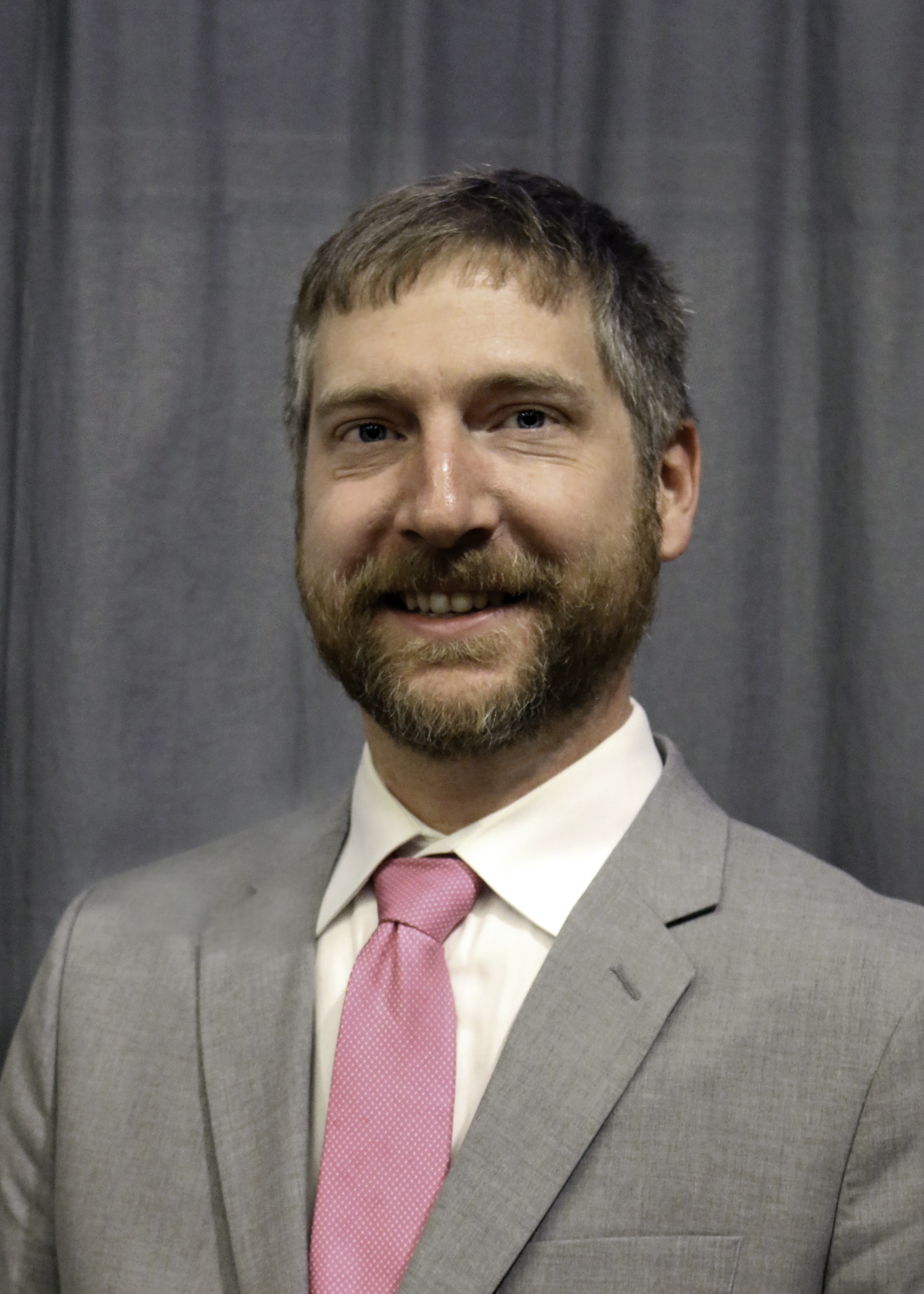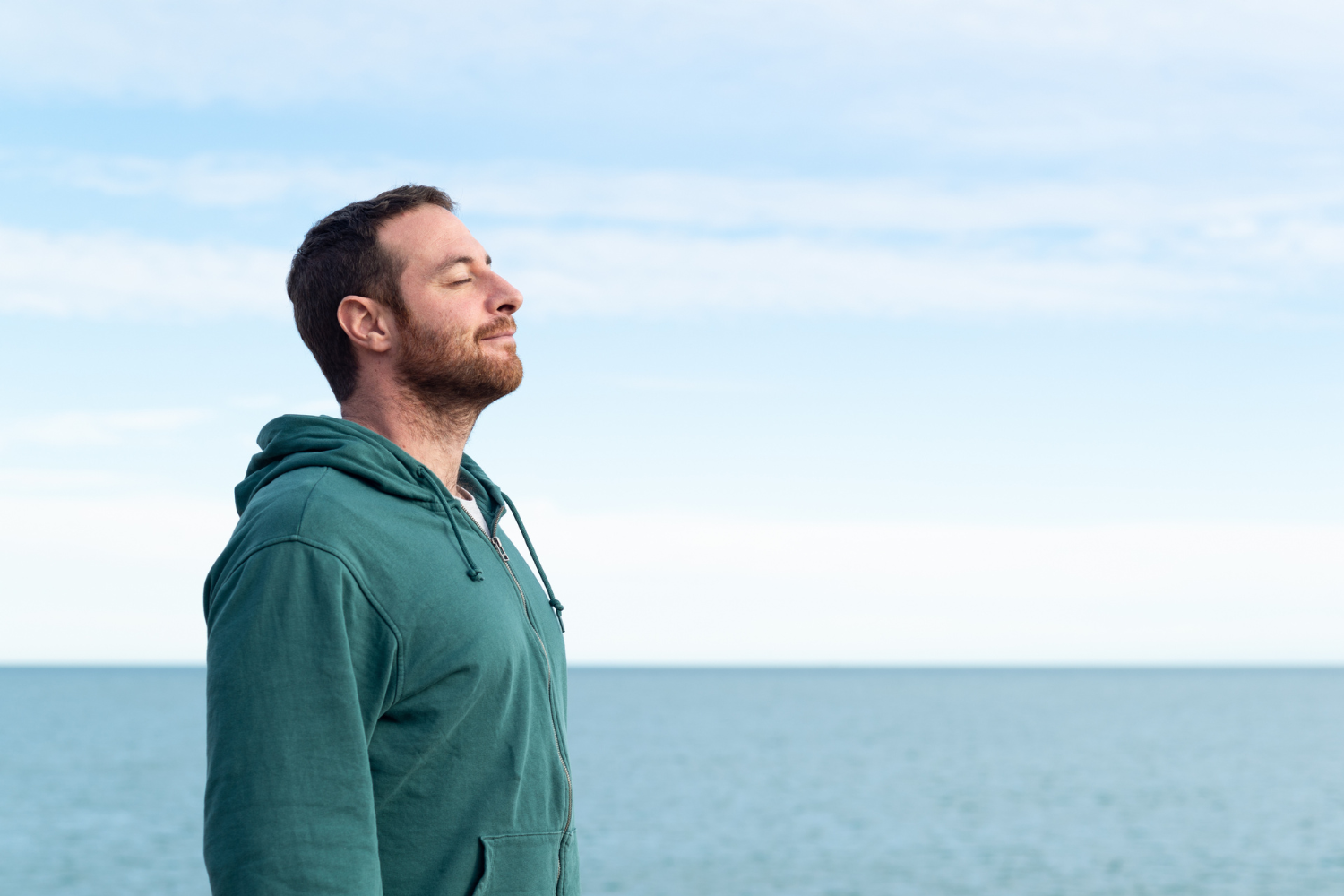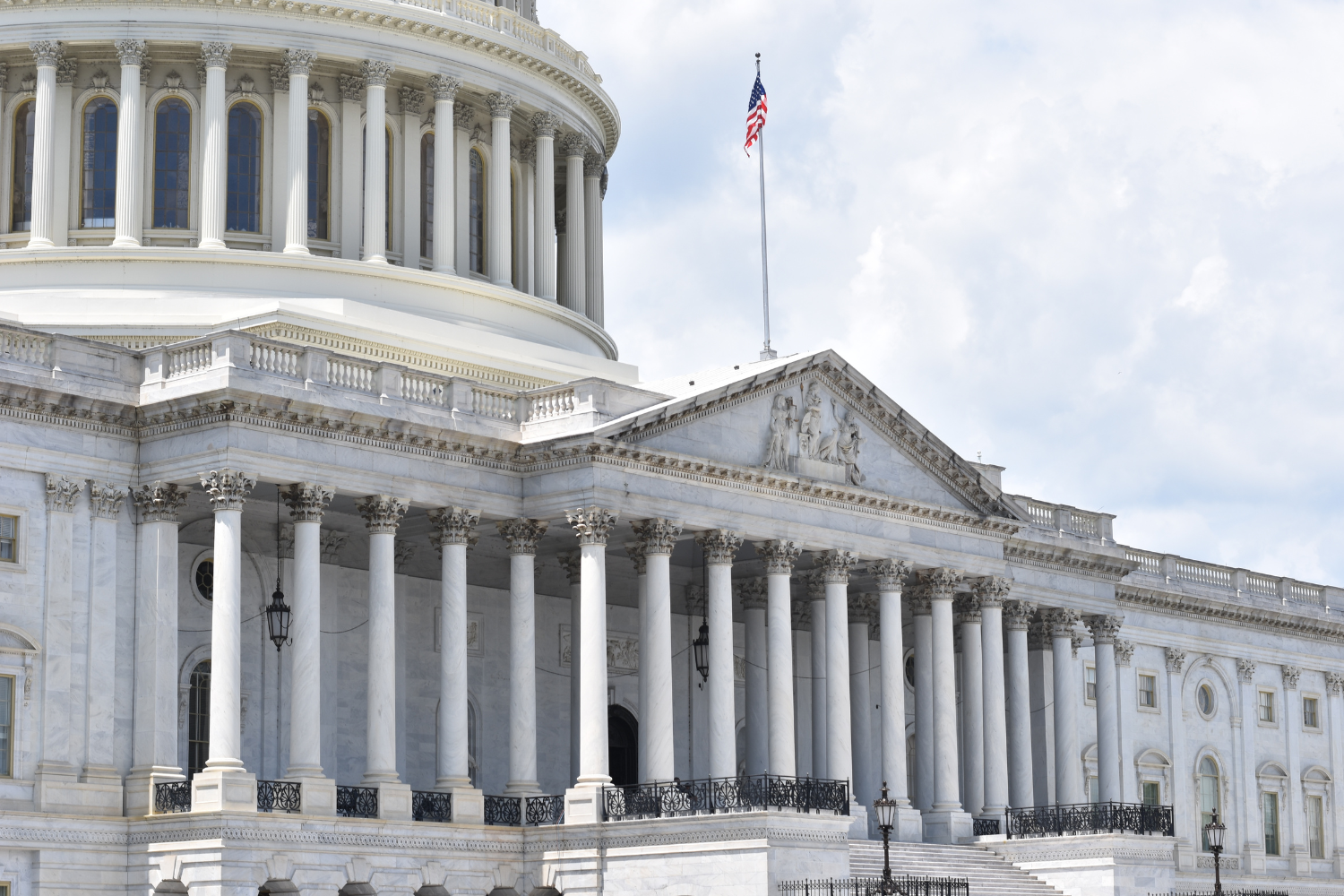 Jeffrey Paul Cashman, MS, DO, FACOFP
Jeffrey Paul Cashman, MS, DO, FACOFPAssociate Dean of OMS-IV and Graduate Medical Education Edward Via College of Osteopathic Medicine - Carolinas Campus
This paper was submitted as part of Dr. Cashman's application for ACOFP Fellowship, which recognizes exceptional national, state, and local service through teaching, authorship, research, or professional leadership. Visit the ACOFP Fellows page to learn more about fellowship and the nomination process.
This study was conducted and completed by the author I have no financial disclosures to present with this study.
ABSTRACT
Medical Student Burnout has been shown to affect nearly half of all medical students based on a meta analysis recently presented at the 2018 European Psychiatry Association congress (17). Previously a review showed levels of depression and distress among medical students that were consistently higher than the general population, although no studies of burnout, or well-being, specifically (18). Rosenthal and Okie reported the high number of students who met the classification of depression and who were receiving treatment in an article of the New England Journal of Medicine in 2005. As well, a study on medical student mental health outlined the challenges facing students (5) and where medical schools have a role in helping (11). There is a dearth of objective studies evaluating burnout, or well-being, in medical school, although there have been studies assessing burnout in medical residents {16, 19).
There have been studies discussing ways to incorporate the humanities into medical school education and how it may affect student learning (2, 4, 7, 10, 12-15). There are studies of wellness initiatives in medical school (8). Spirituality as well as self-care and the effect on burnout has been studied {9 & 3). What this feasibility pilot project aims to show is whether or not an experience of exploring the role of medicine in the arts would help increase student well-being. If it does show trends or significance towards improving student wellness, it would be the intent to offer an elective course to a larger group of medical students.
INTRODUCTION
Burnout, defined by the World Health Organization's International Disease Classification (ICD-11), is a syndrome resulting from chronic workplace stress that has not been managed successfully. It is characterized by feelings of energy depletion or exhaustion, increase mental distance from one's job and reduced professional efficacy (20). An American Medical Association 2020-2021 survey showed Family Medicine at a 59% average of burnout which ranked second among specialties (21). There is much debate about when burnout starts, but a study in Academic Medicine showed medical students at a 49.6% burnout rate which is consistent with physicians (and higher than age-matched peers who are college graduates) (22). Although there is continuing research, there is very little research evaluating burnout, or well-being, in a medical school population. There has been a movement to incorporate humanities into medical school education and how it may affect student learning. This study evaluated a project in the humanities that was introduced to rising second year medical students to determine if completion of this course improved medical student well-being. The hypothesis is that being creative and observing creativity may help students enjoy the rigors of medical education and therefore lead to a decrease in burn-out as a student and setting the stage for improvement in burnout in practice.
METHODS
The study intended to enroll 40 rising second-year medical students. Students were informed of the study and voluntary participation with an advertising email and discussion in the classroom. Due to concern for students feeling pressured to sign-up, it was stressed and re-iterated often that this project will not carry any grade or special favor for the students in order to try to decrease any fear of coercion. From the 40 students, it was determined who qualified with the exclusion criteria of being in good academic standing (this was chosen just as any other elective course for students). The student names were brought to the medical education office to determine good standing. The remaining students were selected to the study-group by a random number generator. The remaining students will be accepted into the control group. This selection process was chosen to select a random representation of the class, hopefully accounting for gender or other criteria. The selection of 20 students was based on the amount of time it will take to have every participant participate in each session. This is not a statistical decision, rather a way to complete this feasibility, pilot, project. Due to students not meeting inclusion criteria as well as some who were a loss to follow-up, there were 19 students in the study group and 11 in the control group (completing the pre- and post-survey).
A Medical Student Well Being Index online survey (using the Qualtrics program) was given to the experimental group as well as the controls. This survey was given to both groups at the beginning of the study as well as the end of the study (after the 6 sessions).
The pilot project consisted of 6 sessions. The first 5 are observing medicine in a form of art and the final session is producing a piece of art. The meetings lasted approximately 3 hours and held during the week.
There were six sessions, the first five sessions are listed below:
- Film: a movie was selected and viewed by all the group with a discussion afterwards. The movie selected will have themes of medical education and burnout. The movie selected was Patch Adams.
- Visual art: each participant selected a piece of art that either depicted their view of medicine or had an emotional tie to medicine for the participant. The visual art was placed in a PowerPoint style presentation and each participant spent 3-5 minutes discussing his or her selection (their perception of how the piece of art relates to medicine).
- Music: each participant selected a song or piece of music that is either about medicine or conveys his or her feeling on medicine. The songs were played during the session and held a 3-5 minute discussion, led by the participant.
- Poetry: each participant selected a piece of poetry to share that has a tie with how he or she views medicine or is a poem about health or medicine.
- Prose: Participants chose one of four books (The House of God by Samuel Shem; The Checklist Manifesto by Atul Gawande; White Coat, Black Hat: Adventures on the Dark Side of Medicine by Carl Elliott; or How We Do Harm: A Doctor Breaks Ranks About Being Sick in America by Otis Brawley). On the day of the session, the participants who read each book broke into a small group to discuss how the book may change their outlook on the practice of medicine and report the discussion to the whole group, as well as a summary of the book.
The sixth, and final, session was student projects: the final meeting had participants present some form of art he or she produced (film, visual, poetry, prose or music) in a 3-5 minute presentation. There were no restrictions on the project other than a guide of developing something that the student felt was an appropriate representation of medicine in art.
Upon completion of the 6 sessions, the 19 participants in the program as well as the other 11 'control' students completed the same Medical Student Well-Being Index and the results were analyzed to see if the program showed improvement in the Medical Student Well-Being Index scores (identified by a decrease in index score). As well, individual comments were requested, voluntarily, from the participants evaluating the program subjectively.
The Medical Student Well Being Index is selected because it is a validated evaluation of student well being.
DATA ANALYSIS AND RESULTS
A two-sample t-test was used to determine if the change in the medical student well-being index in the study population was different than the change in the control group. A p-value of 0.05 was used to determine a statistically significant difference.
A higher Well-Being Index score indicates a higher level of stress and lower level of 'well-being'.
| Initial Well-Being Index | End of study Well-Being Index | |
| Control Group (11 Participants) | 3.44 | 4.36 |
| Study Group (19 Participants) | 3.69 | 3.06 |
*Findings were not statistically significant
DISCUSSION
Although the results did not show a statistically significant difference and improvement in the study group, there was a trend to an improvement in scores (as well as a higher index in the control population). There were many subjective comments on the benefits of the project including:
"Although the project may not have a direct long-term effect on my own mental health, I'd say it was definitely beneficial session to session."
"I think the most beneficial part was hearing how pretty much everyone struggles with anxiety & stress."
"I do not know if you intended these sessions to be "talk about your feelings" time, but that's what it became for a major portion."
"I loved this program. I think it is a great idea and really was beneficial to my mental wellbeing"
"I have always been a very happy person most would say, but medical school has challenged my mental health in ways I could have never imagined. I found comfort in our project...! am not usually good at being vulnerable in front of others."
It shows that students who may not be willing to express stress and emotions were able to do so when discussing art, in different forms. There was overwhelming positive feedback along with concerns that the sessions were long and difficult to attend all 6 with the rigors of medical school curriculum. With the trend in the well-being index and the overwhelming positive feedback, there could be consideration of incorporating other sessions that focus on art in order to discuss the stress faced by students in medical school.
CONCLUSION
Burnout is an ever-increasing problem that starts in medical school. It affects family medicine physicians more than most other specialties. If there are any actions that can improve burnout starting in medical school that will carry forward to practice, then those actions should be explored. Although this was a pilot study, this project gives ideas for options to improve medical student well-being with the intent of improving burnout in family medicine physicians (and other specialties).
LIMITATIONS
There are some obvious limitations as the Well-Being Index is not a direct correlation to burnout. The students were not followed through to determine if there were higher levels of burnout in subsequent academic years. The time investment made by the students for the project could be a confounding variable, but with the trend to improved well-being index scores, this does not appear to be a significant factor. Although anonymous, there could be a bias towards scoring positively on the follow-up Well-Being Index for the group who participated in the study.
WORKS CITED
- Dyrbye LN, Schwartz A, Downing SM, Szydlo DW, Sloan JA, Shanafelt TD. Efficacy of a Brief Screening Tool to Identify Medical Students in Distress. Acad Med. 2011; 86: 907-914
- Taylor A, Lehmann S, Shisolm M. Integrating Humanities Curricula in Medical Education: A Needs Assessment. MedEdPublish 2018 (https://doi.org/10.15694/mep.2017.000090.2)
- Ayala EE, Winesman JS, Johnsen RD, Mason HRC. U.S. Medical Students Who Engage in Self-Care Report Less Stress and Higher Quality of Life. BMC Medical Education 2018; 18: 189-197
- Ousager J, Johannessen H. Humanities in Undergraduate Medical Education: A Literature Review. Acad Med. 2010; 85: 988-998
- Slavin S. Medical Student Mental Health: Challenges and Opportunities. Medical Science Educator 2018 (https://doi.org/10.1007/s40670-018-0622-6)
- Rosenthal JM, Okie S. White Coat, Mood Indigo - Depression in Medical School. NEJM 2005;
353;111085-1088
- Alvarez SE. A Beautiful Friendship. J Museum Ed. 36:157-68
- Real JF, Zackoff MW, Davidson MA, Yakes EA. Medical Student Distress and the Impact of a School-Sponsored Wellness Initiative. Med Sci Educ. 2015; 25:397-406
- Estupinan B, Kibble J. The Relationship Between Spirituality and Burnout in the Lives of Medical Students. Med Sci Educ. 2018; 28:37-44
- Tan T, Sharma N. Art Therapy and Medical Education - Slow and Steady Wins the Race. Med Sci Educ 2014; 24:361-362
- Estabrook K. Medical Student Health Promotion: The Increasing Role of Medical Schools.
Academic Psychiatry. 2008; 32:65-68
- Strickland MA, Gambala CT, Rodenhauser P. Medical Education and The Arts: A Survey of U.S. Medical Schools. Teaching and Learning in Medicine. 2002; 14(4): 264-267
- Kumagai AK. Beyond "Dr. Feel-Good": A Role for the Humanities in Medical Education. Acad Med. 2017; 92(12): 1659-1660
- Kumagai AK, Wear D. "Making Strange": A Role for the Humanities in Medical Education. Acad Med. 2014;89(7)973-977
- Auerbach K, Baruch JM. Beyond Comfort Zones: An Experiment in Medical and Art Education.
Journal for Learning through the Arts. 2012: 8(1)
Silk H, Shields S. Teaching Humanities in Medicine: The University of Massachusetts Family Medicine Residency Program Experience. Journal for Learning through the Arts. 2012: 8(1)
- Davenport L. 'Alarming' Rate of Burnout in Med Students. Medscape March 6, 2018
- Dyrbye LN, Thomas MR, Shanafelt TD. Systematic Review of Depression, Anxiety and Other Indicators of Psychological Distress Among U.S. and Canadian Medical Students. Acad Med. 2006; 81(4) 354-373
- Prins JT, Gazendam-Donofrio SM, Tubben BJ, Van Der Heijden FMMA, Van De Weil HBM, Hoekstra-Wee bers JEHM Burnout in Medical Resident: A Review. Medical Education 2007; 41(8): 788-800
- World Health Organization International Classification of Diseases: https://www.who.int/news/item/28-05-2019-burn-out-an-occupational-phenomenon international-classification-of-diseases
- https://www.ama-assn.org/practice-management/physician-health/burnout-benchmark-28- unhappy-current-heaIth-care-job
- Dyrbye, Liselotte N. MD, MHPE; et. al. Burnout Among U.S. Medical Students, Residents, and Early Career Physicians Relative to the General U.S. Population. Academic Medicine: March 2014- Volume 89 - Issue 3 - p 443-451





